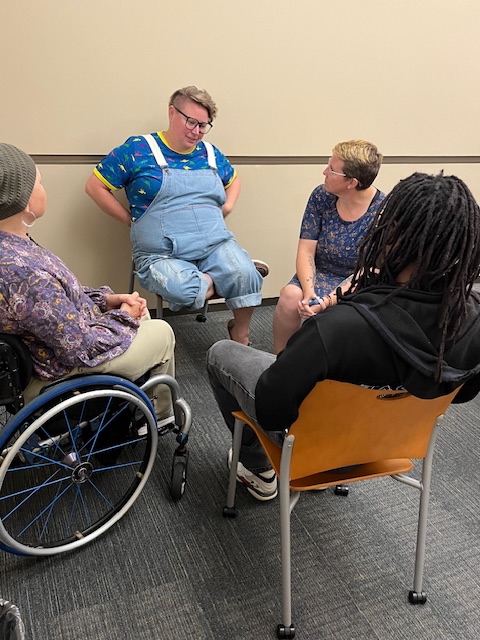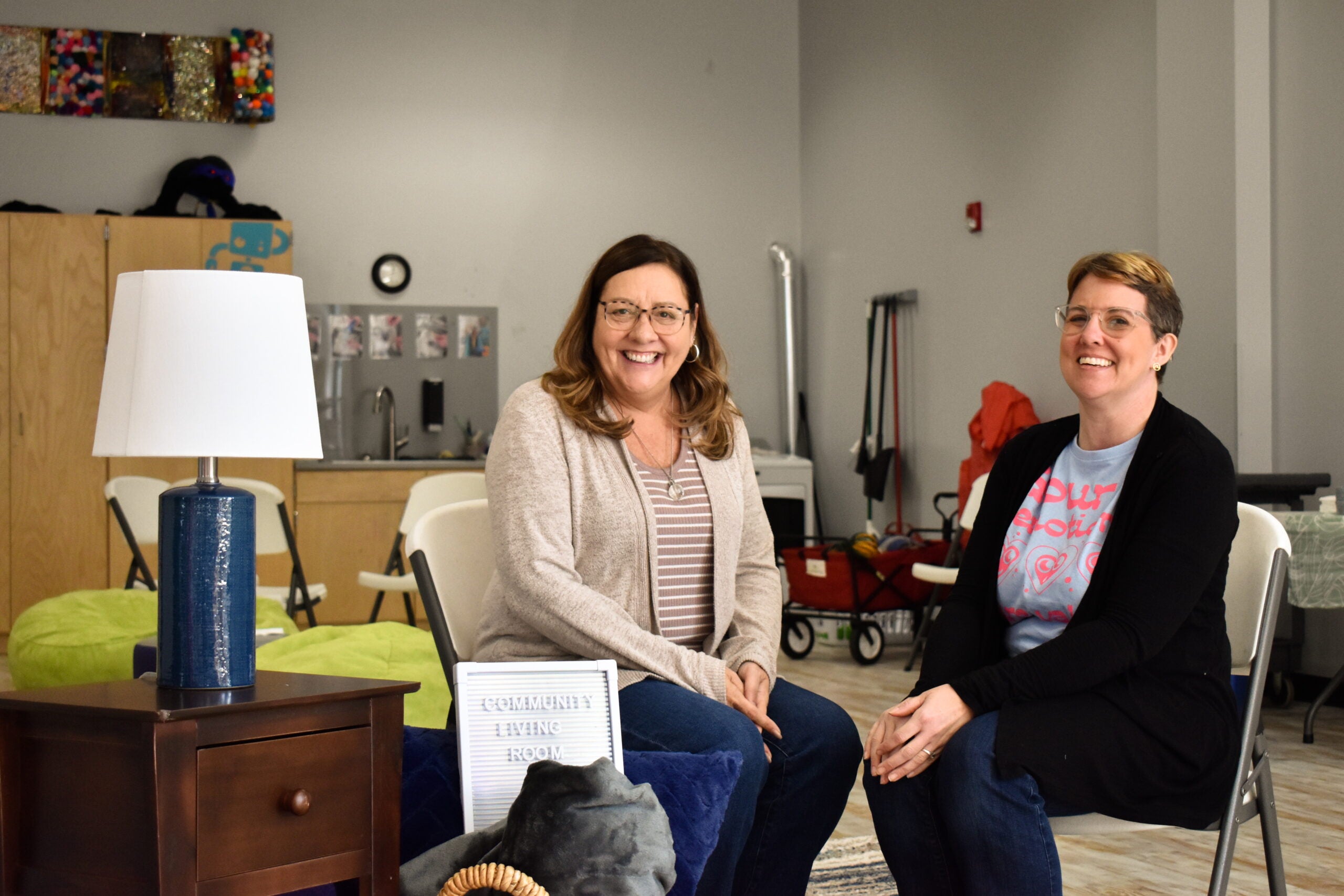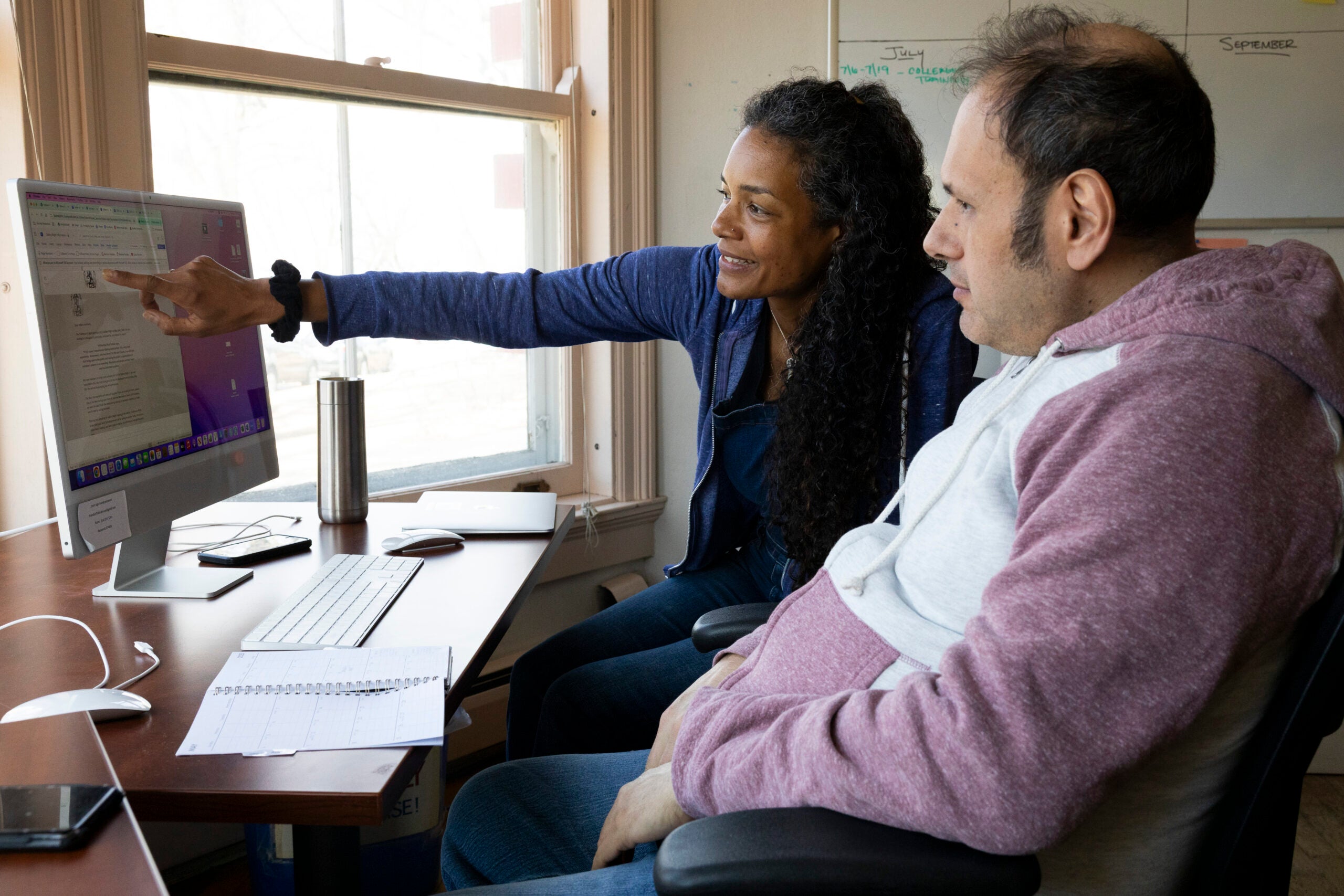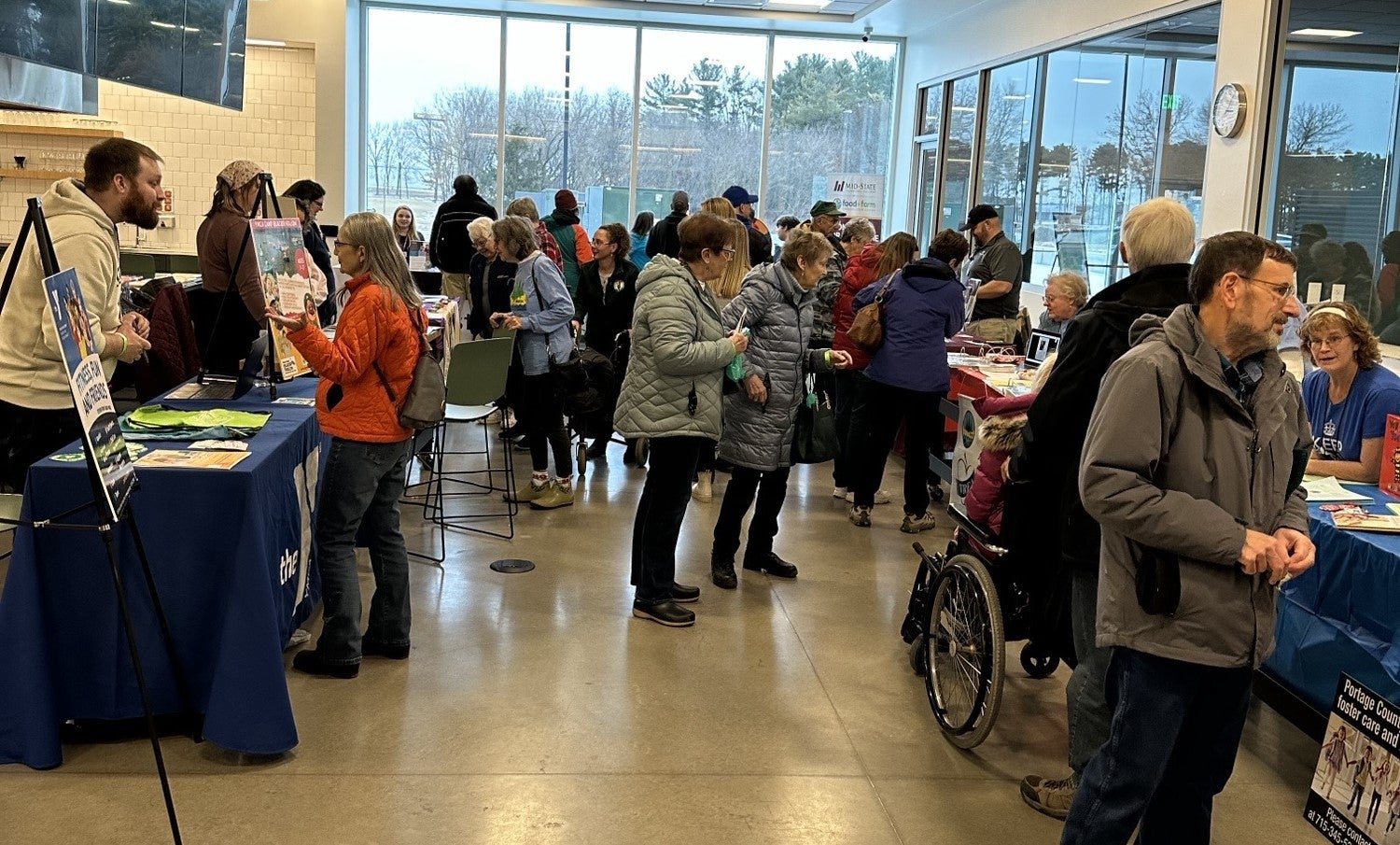Over time, Americans are becoming more disconnected from one another. A Wisconsin group wants to bring people back together.
Long before the COVID-19 pandemic struck, social isolation was increasing and social engagement and companionship was in decline — and the problem has only continued since.
In 2023, the U.S. Surgeon General called social isolation an “epidemic,” citing its significant mental and physical health consequences.
Stay informed on the latest news
Sign up for WPR’s email newsletter.
Recognizing this need, a group in Appleton created a local solution, a space where members of the community can gather to find connection. It’s called a Community Living Room, complete with comfy seating, warm cookies and engaged listeners.
Karen Iverson Riggers is a founding worker and owner of Ebb & Flow Connections Cooperative, which facilitates the Community Living Room project. She told WPR’s “Wisconsin Today” the project was born out of a need for emotional support among members of her community.
“This really came out of … wanting to create a space that breaks down the barriers that people often find when seeking support,” Iverson Riggers said. “So there’s no appointments needed, no forms. You come in and we welcome you, just like I’d welcome you into my living room.”
Just last month, the program got a permanent space of its own in downtown Appleton. Iverson Riggers said they’ve already seen an increase in participation since it opened.
“Every time we have a community living room, there are more people coming, and we have lots of folks who come back every day,” she said.

Appleton’s Community Living Room began with pop-up events around town at libraries, churches, recovery centers, shelters and other community spaces. Each event promises comfortable seating, snacks and drinks, and at least three trained, paid listeners to provide peer support and connection for those who need it.
But one item is consciously left out: expectations.
“We don’t force any connection. We are just present,” Iverson Riggers said. “There’s really not an expectation of how you have to be here.”
TeaJay Hobbs has participated in the Community Living Room through pop-up events with Oshkosh Pride, where they act as advocacy director. Hobbs said they appreciate that the space is free to evolve into whatever the group needs that day.
“My experiences at the Community Living Room have all been positive, although no experiences have been the same,” Hobbs told “Wisconsin Today.” “Sometimes we laugh and sometimes we cry, but we’re always real humans being in community together.”
Sara Kohlbeck is director of the Division of Suicide Research and Healing at the Medical College of Wisconsin, as well as the academic partner on the Community Living Room project. She told “Wisconsin Today” the project’s methods are supported by current mental health research.
“We know that social connection — from the suicide prevention literature and from the mental health literature — is incredibly protective,” Kohlbeck said. “The Community Living Room … is doing a lot in terms of that upstream prevention, whether it’s mental health challenges or even suicide.”
Listeners trained in ’emotional CPR’
Before working at the Community Living Room, listeners must first go through training called “emotional CPR,” which teaches the skills needed to support a person in emotional distress or crisis.
Iverson Riggers is lead trainer of emotional CPR for the state of Wisconsin. She said that while we’re all taught communication skills like writing, reading and speaking, we’re rarely taught how to properly listen.
“It’s one thing to be quiet with your mouth. It’s another thing to really open up space in your mind, because we’re always thinking,” she said. “We’re thinking about the next thing we’re going to say, we’re thinking about resources we might want to share, we’re thinking about what we did when we had that situation. And then often we stop listening.”
Iverson Riggers said the techniques that listeners use can make an incredible difference to someone in pain.
“We say in our work that pain witnessed is pain transformed,” she said. “It doesn’t fundamentally change anything about what that person is going through, but something fundamentally shifts when we really feel witnessed right where we are.”
Wisconsin Public Radio, © Copyright 2025, Board of Regents of the University of Wisconsin System and Wisconsin Educational Communications Board.


